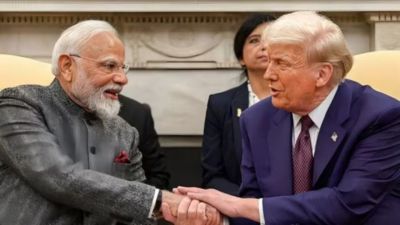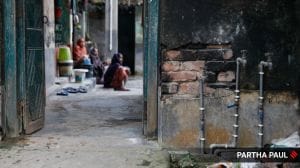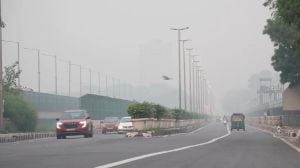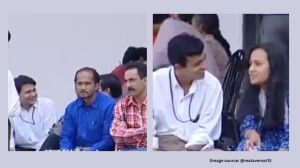Giga-sized controversy
While it is commendable that the Vajpayee government stood firm on the Rs 1,407 crore Sankhya Vahini project, in the face of strong opposi...

While it is commendable that the Vajpayee government stood firm on the Rs 1,407 crore Sankhya Vahini project, in the face of strong opposition to it from within the Sangh Parivar and outside it, the jury is still out on whether it was the wisest thing to have done. On the face of it, this high speed datalink project is just what the doctor ordered for a mini-continent of India’s proportions. When completed, it would represent a quantum leap in the transmission of data within the country. Yet the questions over the manner in which it was conceived, as well as its long-term implications for the country, just refuse to go away. And are unlikely to do so either, given the sharp responses.
The project is a joint venture between the Union government and IUNet, a subsidiary of the Pittsburg-based Carnegie Mellon University. Under it, an estimated 10,000 km of multi-pair fibre-optic network, at present under the Department of Telecom Services (DTS), will be transferred to the Sankhya Vahini, even as IUNet upgrades this network technologically, so that it can transmit both voice and data signals at extremely high speeds. Given the scope of the project any agency that wishes to transmit data within the country, whether a university, a software firm or a media house, would make use of its services IUNet, which has 49 per cent share in the project, stands to repatriate huge dividends. Critics of the project allege that the joint venture was pushed through without a proper assessment of IUNet’s capacities, as well as that of its competitors. Even a business plan on it was not gone through. Therefore, the principle of a level playing field was largely ignored. Andhra Pradesh Chief Minister ChandrababuNaidu, whose baby the project is, recently reminded the Prime Minister that a National Information Technology Task Force, of which incidentally Naidu was the co-chair, had recommended this project. But a task force of this kind can at best recommend, it does not have the locus standi to ensure that it becomes government policy. Naidu’s attempt to force the issue therefore is improper, to say the least. The other fear voiced over the project concerns the security aspect, given the sensitivity of at least some of the data that will be transmitted. While the government insists that it will put into place the required checks-and-balances, this is easier said than done when dealing with a technology that is extremely, nearly impossible, to regulate.
Given these legitimate fears, the Vajpayee government should have paid more heed to the advice of the 45-member Parliamentary Standing Committee on Communications which had recommended a full review of the project. That it chose not to do so only adds to the charge that there is a distinct lack of transparency about the project. Where was the hurry, in any case? True, the MoU between DTS and IUNet was reported to the Telecom Commission in November 1998. True, the Union Cabinet had cleared it over three months ago. But the skies wouldn’t have fallen if a few more months were spent on clearing the patina of doubt that has unfortunately come to mark Sankhya Vahini.





- 01
- 02
- 03
- 04
- 05


























